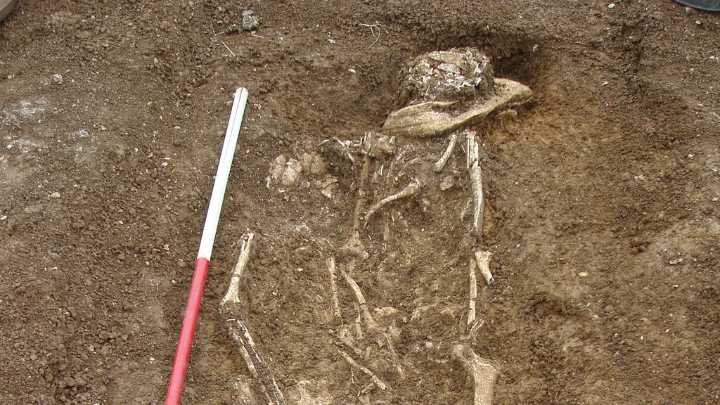Archaeologists have discovered that two people buried in seventh-century cemeteries on England's south coast had recent West African ancestry. Researchers analysed ancient DNA from graves at Updown in Kent and Worth Matravers in Dorset. While most of the individuals buried there had northern European or western British and Irish ancestry, one person at each site had genetic markers linking them to present-day Yoruba, Mende, Mandenka and Esan populations from sub-Saharan West Africa. The findings, published in Antiquity, suggest both individuals had a mixed heritage, with maternal lines from northern Europe but paternal ancestry from West Africa - suggesting seventh century Britain was a more diverse place than previously thought. "These results highlight the cosmopolitan nature of early medieval England," Dr Ceiridwen J. Edwards says. "It was a diverse society with far-flung connections, where people of different origins were integrated into everyday life." Kent's Updown medieval cemetery, where one of the graves was found, was closely connected to the royal centre of Finglesham and part of a wider network of continental influence. "Kent has always been a conduit for influence from the adjacent continent," adds Professor Duncan Sayer, from the University of Central Lancashire. "Updown's links may even have extended to the Byzantine Empire." The Updown grave included imported goods, such as a pot from Frankish Gaul and a spoon possibly linked to Christian rites. By contrast, Dorset's Worth Matravers, home to the other grave, lay beyond the main sphere of Anglo-Saxon influence. "There was a marked cultural divide between Dorset and areas further east," says Edwards, from the University of Huddersfield. The Worth Matravers individual was buried alongside a man of British ancestry and an anchor carved from local limestone. In both cases, the people were interred in the same manner as others in their communities, suggesting they were fully accepted locally. "It is significant that it is human DNA-and therefore the movement of people, and not just objects -that is now starting to reveal the nature of long-distance interaction to the continent, Byzantium and sub-Saharan Africa", states Professor Sayer. "What is fascinating about these two individuals is that this international connection is found in both the east and west of Britain. Updown is right in the centre of the early Anglo-Saxon cultural zone and Worth Matravers, by contrast, is just outside its periphery in the sub-Roman west." The study adds a new dimension to understanding migration in early medieval Britain. "Our joint results emphasise the cosmopolitan nature of England in the early medieval period, pointing to a diverse population with far-flung connections who were, nonetheless, fully integrated into the fabric of daily life," Dr Edwards concludes.
'West African DNA' found in 7th Century graves in Southern England
 Cover Media4 hrs ago
Cover Media4 hrs ago
10


 KUOW Public Radio
KUOW Public Radio The Week
The Week CNN
CNN WCAX 3 Burlinton
WCAX 3 Burlinton The Telegraph
The Telegraph WBAY TV-2
WBAY TV-2 WOWT Crime
WOWT Crime The Travel
The Travel AlterNet
AlterNet The US Sun Entertainment
The US Sun Entertainment